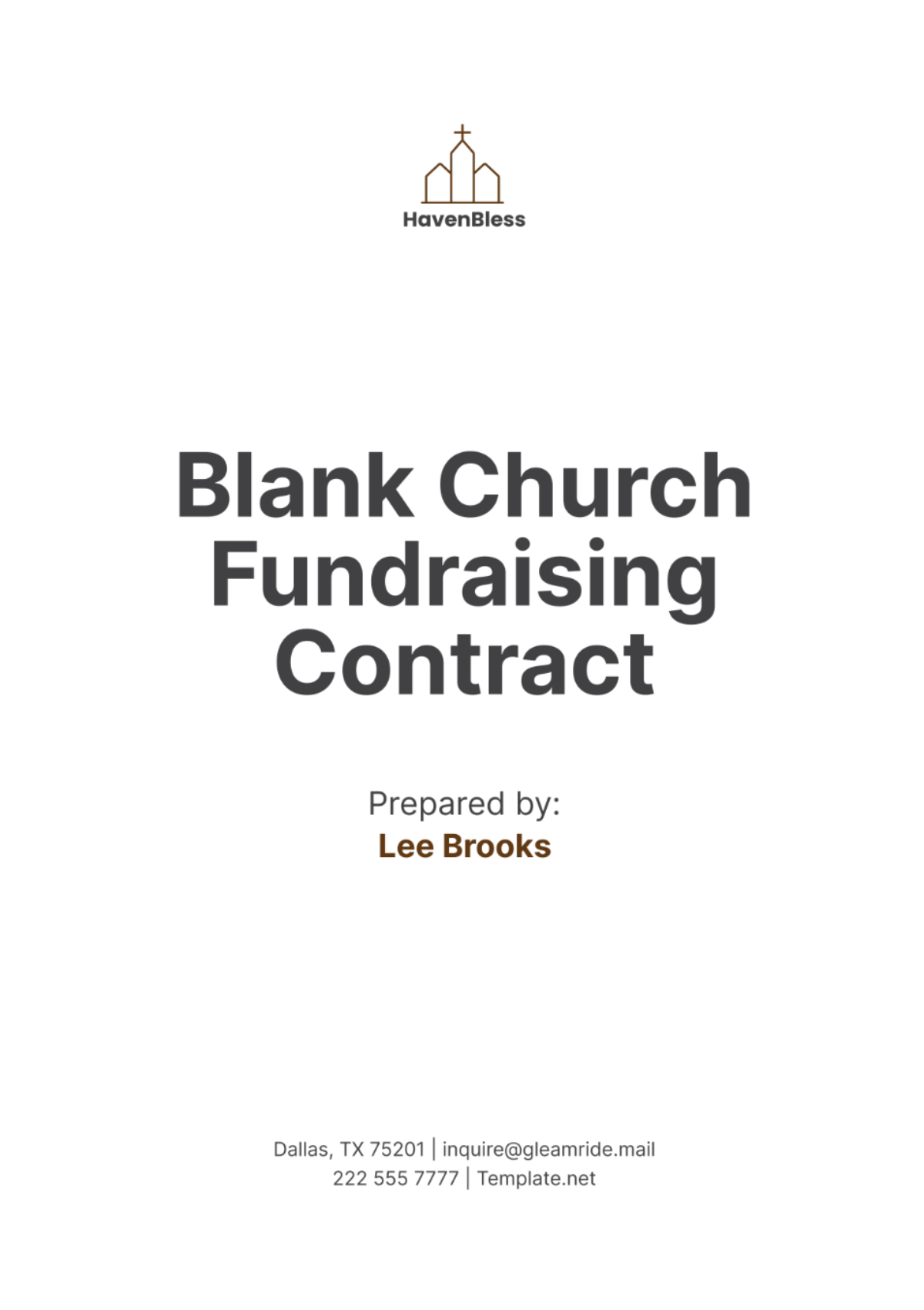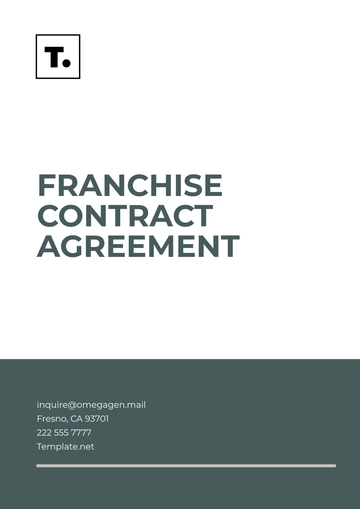Free Blank Church Fundraising Contract

I. Introduction
A. Purpose of the Contract
(Outlines the intent of the contract, which is to formalize the agreement between the church and the other party for a fundraising event. It provides a clear understanding of the goals and expectations for both parties to ensure a successful collaboration.)
B. Parties Involved
(Identifies the church and the other party involved, detailing their names, roles, and contact information. This ensures that all parties are clearly defined and can be easily reached for communication and coordination.)
II. Event Details
A. Event Description
(This subsection provides a comprehensive overview of the event, including its type (e.g., gala, auction) and key logistical details such as date, time, and location. It sets the stage for the planning and execution of the event by providing essential information.)
B. Event Goals
(The goals of the event are described, including the specific fundraising targets and the causes or projects that the raised funds will support. This helps in aligning the efforts of all parties involved with the purpose of the fundraising initiative.)
III. Responsibilities
A. Church Responsibilities
(This section details the church’s obligations, such as organizing the event, providing necessary facilities and resources, and managing the funds and donations. It ensures that the church’s role is clearly defined to facilitate smooth execution of the event.)
B. Other Party Responsibilities
(The other party’s responsibilities are outlined, including event planning, securing sponsors or vendors, and handling promotion and marketing. This clarifies their role in the event’s success and ensures that all tasks are covered.)
IV. Financial Terms
A. Fundraising Methods
(This subsection describes the methods used to raise funds, including the handling of donations and proceeds. It ensures that the processes for collecting and managing money are transparent and agreed upon by all parties.)
B. Financial Arrangements
(Details about the budget, expenses, fees, and payment terms are outlined here. This section provides clarity on financial obligations and arrangements to prevent misunderstandings and ensure proper financial management.)
V. Legal and Compliance
A. Compliance with Laws
(This section ensures that all aspects of the fundraising event adhere to relevant local, state, and federal regulations. It includes obtaining necessary permits and licenses to ensure the event is legally compliant.)
B. Insurance and Liability
(Requirements for insurance coverage and liability protection are detailed here. This ensures that both parties are protected against potential risks and liabilities associated with the fundraising event.)
VI. Term and Termination
A. Contract Duration
(The duration of the contract is specified, including the effective date and end date or duration of the agreement. This section provides a clear timeline for the contract’s validity and helps manage expectations.)
B. Termination Conditions
(Conditions under which the contract may be terminated early are outlined, along with the procedures for doing so. This ensures that there are agreed-upon terms for ending the contract if necessary.)
VII. Dispute Resolution
A. Resolution Process
(This subsection describes the methods for resolving disputes, such as mediation or arbitration. It provides a structured approach to handling disagreements and ensures that issues are addressed fairly and efficiently.)
B. Jurisdiction and Venue
(The jurisdiction and venue for any legal disputes are specified here. This determines where disputes will be resolved and which legal system will be used, providing clarity and reducing potential conflicts.)
VIII. Miscellaneous
A. Amendments
(Procedures for modifying the contract are detailed, including the requirement for written consent. This ensures that any changes to the contract are formally agreed upon by both parties.)
B. Confidentiality
(Confidentiality obligations are outlined, specifying how sensitive information should be handled. This protects the privacy of both parties and ensures that confidential information is not disclosed inappropriately.)
C. Signatures
(Signature lines for representatives of both the church and the other party are provided. This section formalizes the agreement and indicates that both parties have reviewed and accepted the terms.)
D. Contact Information
(Additional contact details for queries or notices are included here. This ensures that both parties have the necessary information to communicate effectively throughout the contract term.)
- 100% Customizable, free editor
- Access 1 Million+ Templates, photo’s & graphics
- Download or share as a template
- Click and replace photos, graphics, text, backgrounds
- Resize, crop, AI write & more
- Access advanced editor
Introducing the Blank Church Fundraising Contract Template from Template.net. This editable and customizable template is designed to streamline your church’s fundraising efforts. With its user-friendly AI Editor Tool, you can easily tailor the contract to fit your specific needs, ensuring a smooth and professional agreement for all your fundraising events.
You may also like
- Rental Contract
- Contractor Contract
- Contract Agreement
- One Page Contract
- School Contract
- Social Media Contract
- Service Contract
- Business Contract
- Restaurant Contract
- Marketing Contract
- Real Estate Contract
- IT Contract
- Cleaning Contract
- Property Contract
- Supplier Contract
- Partnership Contract
- Food Business Contract
- Construction Contract
- Employment Contract
- Investment Contract
- Project Contract
- Payment Contract
- Student Contract
- Travel Agency Contract
- Startup Contract
- Annual Maintenance Contract
- Employee Contract
- Gym Contract
- Event Planning Contract
- Personal Contract
- Nursing Home Contract
- Law Firm Contract
- Work from Home Contract
- Software Development Contract
- Maintenance Contract
- Music Contract
- Amendment Contract
- Band Contract
- DJ Contract
- University Contract
- Salon Contract
- Renovation Contract
- Photography Contract
- Lawn Care Contract





























